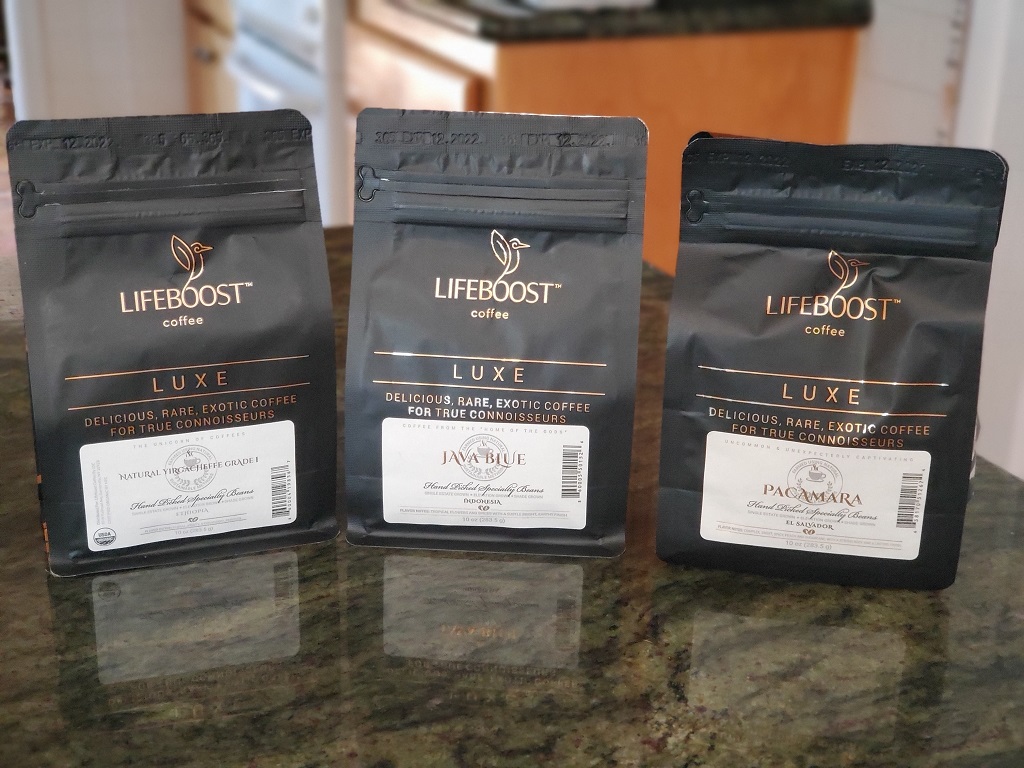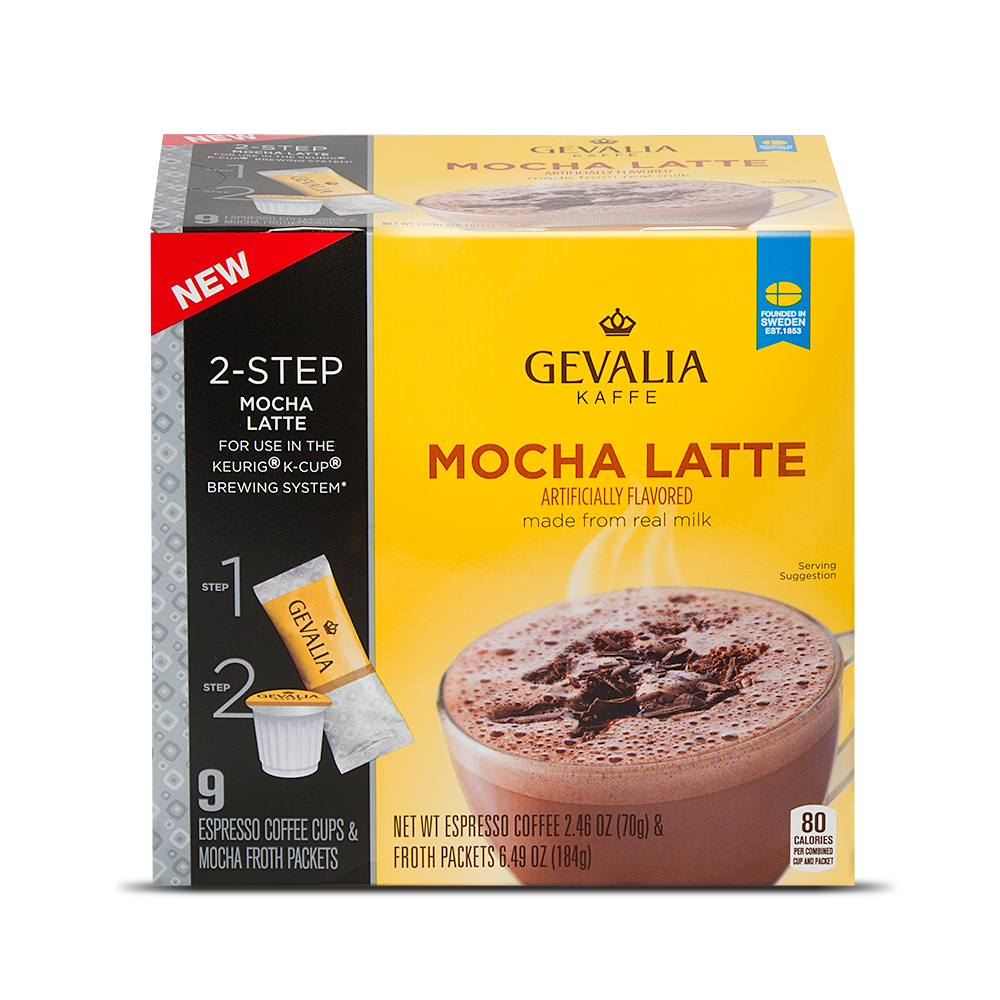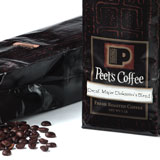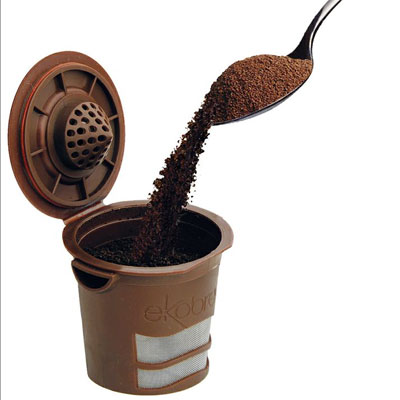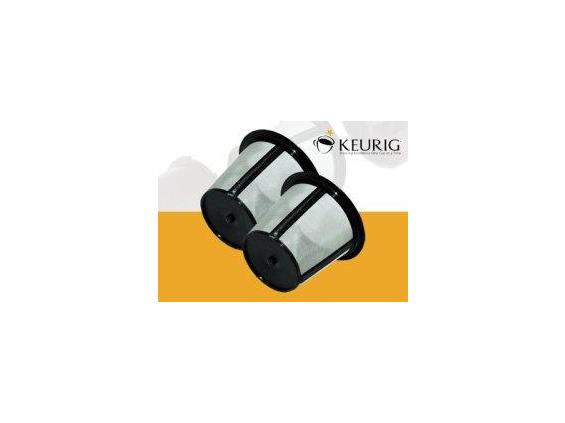Life is filled with rare temptations. Events or items that because of location or expense we choose to do without. That doesn’t mean we no longer want them, quite the opposite. Often those things that seemed reserved for the few or the entitled become the focus of our desires. Items we’d like to obtain … at least once in our lives.
The work-around is to enjoy something rare and expensive for a *short* while. Maybe RENT a supercar for a few hours (and pray you don’t get into an accident) or spend an afternoon shopping for the perfect 10-thousand-dollar handbag. This gives you a “taste” of the rare and expensive, without having to take out a second mortgage on your house.
Lifeboost Coffee offers a similar solution to sample what would otherwise be too expensive for most mortals. They offer a sampler of highly regarded single-origin coffees that will give you a taste of what is usually reserved for the very well heeled. It is their “Luxe” sampler of coffees.
Lifeboost Coffee calls this line a “Delicious, rare, exotic coffees for true connoisseurs” and it comes packaged in deluxe resealable bags holding 10 ounces (283.5 grams) of each coffee. The gift set that I received came with three different roasts, Java Blue from Indonesia, Pacamara from El Salvador and Ethiopian Yirgacheffe. Each are delivered as whole bean.
Let me start by saying that all these coffees were delicious, flavorful and clearly very special. I prepared each type by applying a drip grind and preparing in a french press. Instructions provided with the purchase offers a starting ratio for brewing, but encourages experimentation to find a preferred strength. The resulting brews were very clean tasting, with strong, unmuddied characteristics of single-origin roast. They all offered very subtle fragrances and tastes that comes from the bean itself, with very little impact from the chosen roasts.
While Ethiopian varieties have never been my favorites, I did enjoy this one for its wide range of flavors, with hints of blueberry, peach and floral scents. I must congratulate the roaster for hitting this batch just right, the flavor is all in the bean with very little roasting characteristics taking over. The magic here is in the subtle characteristics of the cup, there’s a ton going on and all of it is good.
The Java Blue from Indonesia makes good on the promise of a premium mountain-grown coffee. I found it very smooth and full of flowery hints. Again, it is all about the bean and the roast is perfect to bring out all the intricate flavors.
My favorite is the Pacamara, an El Salvador bean that is big in size and big in flavor. I am a fan of strong mouthfeel and flavor and this one has it by every measure. While the other two are coffees to be savored like an expensive wine, the Pacamara is strong enough to be gulped with gusto. The coffee is powerful and delicious and can be “manhandled” and not lose it’s premium qualities. Great stuff by any metric.
Enjoying truly premium coffees like this comes with a premium cost. The Lux collection from Lifeboost is by no means a value purchase. Each of these ten-ounce bags sells in the $50 dollar range, or about $150 dollars for the gift selection of three. That works about to around $80 a pound for each of these single-origin roasts, making it the most expensive coffee I’ve ever reviewed. It is worth it? If you want to drive that supercar or handle that 10k handbag to say you had the experience, yes it is worth it. If you want to treat your coffee-crazy companion to a treat that will be remembered for a long time, this is it. This is some of the best coffee anywhere, and it is delivered at a roast perfect to bring out the best in the bean. I won’t be ordering a continuing subscription on these coffees, as I like finding the best tasting coffee within a realistic budget. And $80 USD a pound is simply not realistic. But to say you’ve had what could be argued as the rarest, most sought-after coffee in the world – just this once – the price tag is worth it.

